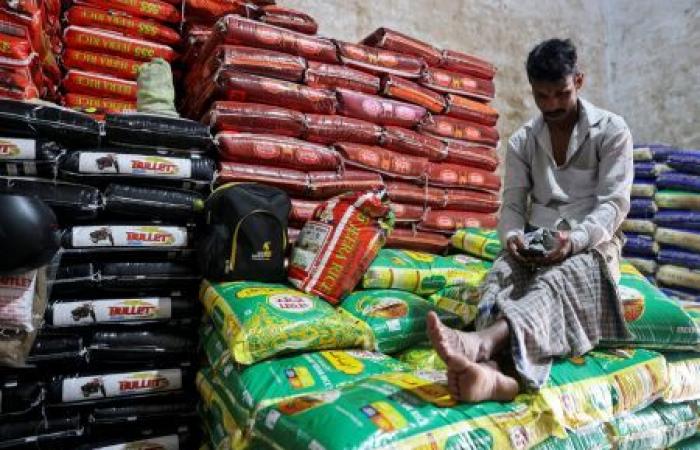(Ecofin Agency) – Last July, the FAO rice price index reached its lowest level in 12 months. Since that date, the loosening of India’s trade policy has further pushed prices down for the main African importing countries still seeking self-sufficiency.
India’s return to the rice market will allow deficit African countries to import the cereal at low cost, but does not necessarily represent good news for local producers. This is what Patricio Mendez del Villar, researcher at CIRAD and editor of the Osiriz economic report, believes.
Encouraged by the prospects of an abundant harvest, the Indian government notably removed by official decree, on Wednesday October 23, the floor price for the export of non-basmati white rice of $490, after having abolished a 10% tax. on parboiled rice.
This new configuration should revive competition in the market and lead other operators such as Pakistan, Thailand and Vietnam to further reduce the tariffs applied to exports.
« India’s export recovery was predictable. But the question was when. In any case, we knew that from the moment the country announced its return to the market, there would be, if not a collapse, at least a significant drop in world rice prices. And this is what is happening. We are entering a period where in the short term, that is to say in the next six months, world prices will be rather downward. », predicts Mr. Mendez del Villar.
From this perspective, the analyst believes that local farmers in West Africa will have to cope with the influx of Asian rice which is much more attractive, taking into account the purchasing power of the populations and which benefits from numerous advantages.
« Opposite to local rice, there is imported rice which arrives in West African cities by boat every week or month at a very competitive price, with a relatively constant quality which is available throughout the year. ‘year. This means that urban markets are regularly supplied with this arrival of rice. In the case of local rice, there are at best two harvests or at least one main harvest. And therefore, to be able to supply all markets with local rice all year round, it would be necessary to have storage and conservation structures, which are not only in sufficient quantity, but also which are efficient in terms of quality, in a manner that the rice is stored in good conditions “, he explains.
It should be noted that the recent relaxation of India’s rice policy comes in a context where the Economic Community of West African States (ECOWAS) announced a new plan for self-sufficiency in the cereal over the period. 2025-2030 with a projected cost of $19 billion.
As a reminder, according to data from the United States Department of Agriculture (USDA), India is expected to export 21 million tonnes of rice in 2024/2025, marking a return to levels dating from 2020/2021 and 2021/2022. Over the last two seasons, the volume shipped was less than 18 million tonnes, due to restrictions.
Espoir Olodo






